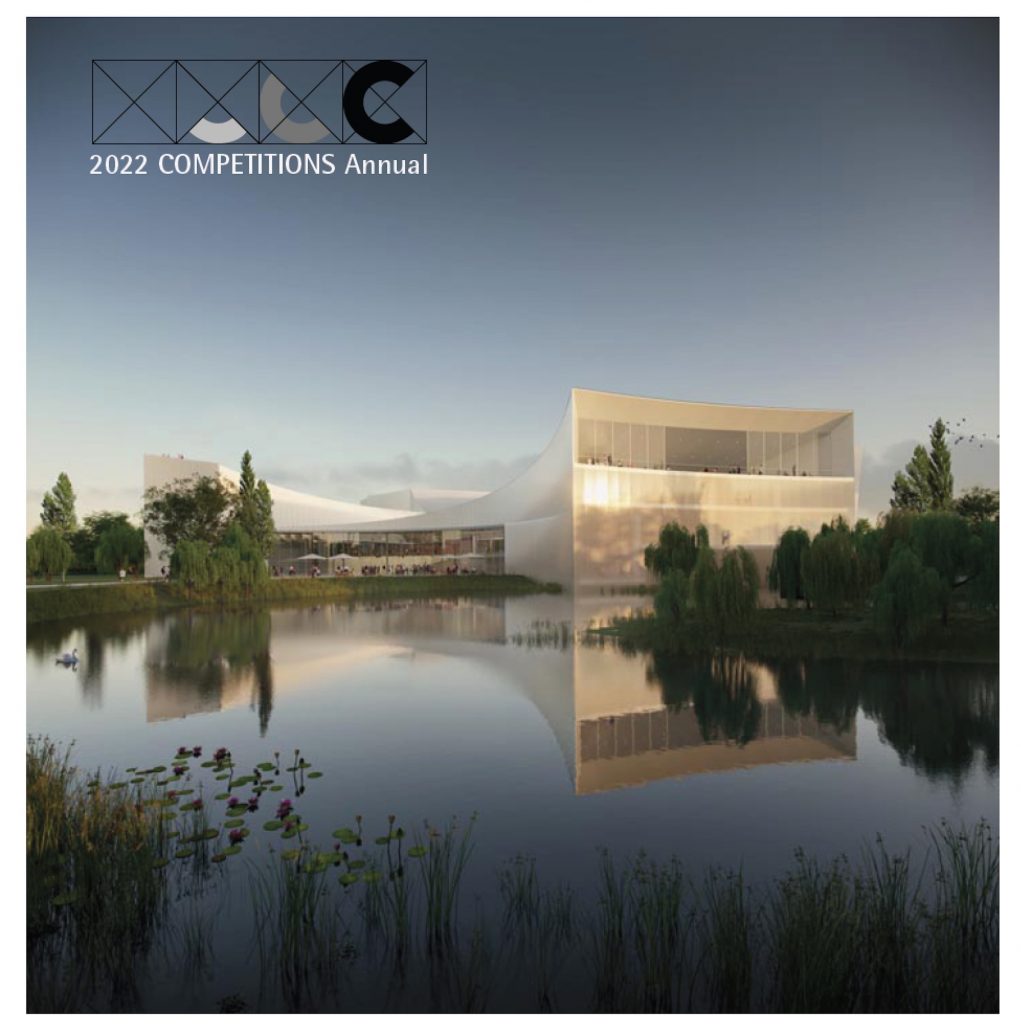Cleveland MLK Public Library Branch Project Sponsors: Cleveland Public Library, Cleveland Foundation
Type: Open, RfQ, two-stage
Eligibility: Licensed architects
Language: English
Location: University Circle, Cleveland, Ohio
Fee: none
Timeline:
27 November 2017 (5pm EST) – RfQ deadline
18 December 2017 – Notification of semi-finalists
Building and budget details
• Building size: 20,000 sf (1-2 levels.)
• Air Space: The Developer will construct a residential apartment building in the air space above the library building as part of the overall development between 5 to 10 stories in height.
• Total Project Budget: $10 million, which includes all costs of design, permits, consultants, soft costs, construction, and all contingencies.
Two-Phase Design Competition Details
• Phase I – Semi-finalists
• Up to eight firms will be selected from the Statements of Qualifications in response to the Design Brief/ RFQ and will be interviewed remotely or in person. · Phase II – Finalists
• At least 3 firms will be selected from the Phase I interviews and Statements of Qualifications and be invited to develop a design concept for the new MLK Branch and present in-person.
Compensation
$20,000 will be paid to each of the three selected finalists upon satisfactory completion of the competition requirements to cover design costs and travel expenses.
Design Challenge The new Martin Luther King Jr. branch library (“MLK Branch”) will replace an older, outdated building that will be demolished to make way for a large residential and commercial mixed-use project in Cleveland’s University Circle neighborhood. This offers the Library a unique opportunity to both significantly upgrade its branch facilities and move to a location directly on Euclid Avenue, one of Cleveland’s most accessible streets for public transit. It also allows the Library to design a new, iconic facility that honors the legacy of the branch’s namesake—Dr. Martin Luther King, Jr.
Air Rights above Library
The Developers of Circle Square have the legal right to build in the airspace above the MLK Branch. The exact boundaries and dimension of the Developer’s air rights parcel have not yet been defined, but based upon the massing plan included as Attachment C, it is anticipated that a portion of the 5 to 10 story apartment building will be constructed in the air rights above the Library, partially covering the roof of the Library. The front of the apartment building will be set back approximately 37 feet from the front of the Library, leaving a section of the Library roof exposed. A portion of the Library roof will also remain exposed in the northeast corner, where Library mechanical equipment will likely be installed. There is no set height at which the air rights parcel must begin. Rather, the air rights parcel will begin at an elevation just above the roof of the Library and any equipment or amenities placed upon the roof. Structural columns to support the apartment building will need to be placed within the Library for which the Developers will be financially responsible. At this time the anticipated weight of the apartment building or the type of materials to be used is unknown, but these details will become available from the Developers before design concepts are developed. Although the two buildings must necessarily share some of the same building elements, the Library should be visually distinct from the apartment building and should appear as separate building. Plaza Adjacent to Library
The development currently contemplates a small plaza adjacent to the Library on the east side close to Euclid Avenue. The plaza’s frontage will be approximately 67 feet long, and the depth approximately 55 feet (See Attachment C). The Developers intend to install limited hardscaping in the plaza and invite the Library to collaborate on the design. The plaza will be open to the public, and the Library may use the plaza for periodic programming on a nonexclusive basis. Therefore, the Library design should incorporate access to the plaza. To view the competition brief, go to: https://cpl.org/wp-content/uploads/procurement/mlk-design-competition-brief-and-rfq-with-attachments.pdf |
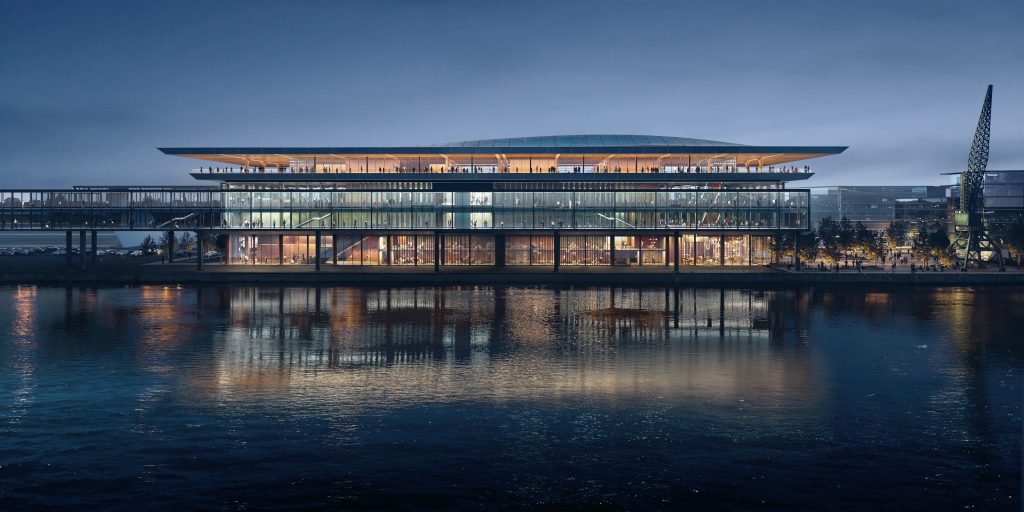
1st Place: Zaha Hadid Architects – night view from river – Render by Negativ
Arriving to board a ferry boat or cruise ship used to be a rather mundane experience. If you had luggage, you might be able to drop it off upon boarding, assuming that the boarding operation was sophisticated enough. In any case, the arrival experience was nothing to look forward to. I recall boarding the SS United States for a trip to Europe in the late 1950s. Arriving at the pier in New York, the only thought any traveler had was to board that ocean liner as soon as possible, find one’s cabin, and start exploring. If you were in New York City and arriving early, a nearby restaurant or cafe would be your best bet while passing time before boarding. Read more… Young Architects in Competitions When Competitions and a New Generation of Ideas Elevate Architectural Quality 
by Jean-Pierre Chupin and G. Stanley Collyer
published by Potential Architecture Books, Montreal, Canada 2020
271 illustrations in color and black & white
Available in PDF and eBook formats
ISBN 9781988962047
Wwhat do the Vietnam Memorial, the St. Louis Arch, and the Sydney Opera House have in common? These world renowned landmarks were all designed by architects under the age of 40, and in each case they were selected through open competitions. At their best, design competitions can provide a singular opportunity for young and unknown architects to make their mark on the built environment and launch productive, fruitful careers. But what happens when design competitions are engineered to favor the established and experienced practitioners from the very outset? This comprehensive new book written by Jean-Pierre Chupin (Canadian Competitions Catalogue) and Stanley Collyer (COMPETITIONS) highlights for the crucial role competitions have played in fostering the careers of young architects, and makes an argument against the trend of invited competitions and RFQs. The authors take an in-depth look at past competitions won by young architects and planners, and survey the state of competitions through the world on a region by region basis. The end result is a compelling argument for an inclusive approach to conducting international design competitions. Download Young Architects in Competitions for free at the following link: https://crc.umontreal.ca/en/publications-libre-acces/ 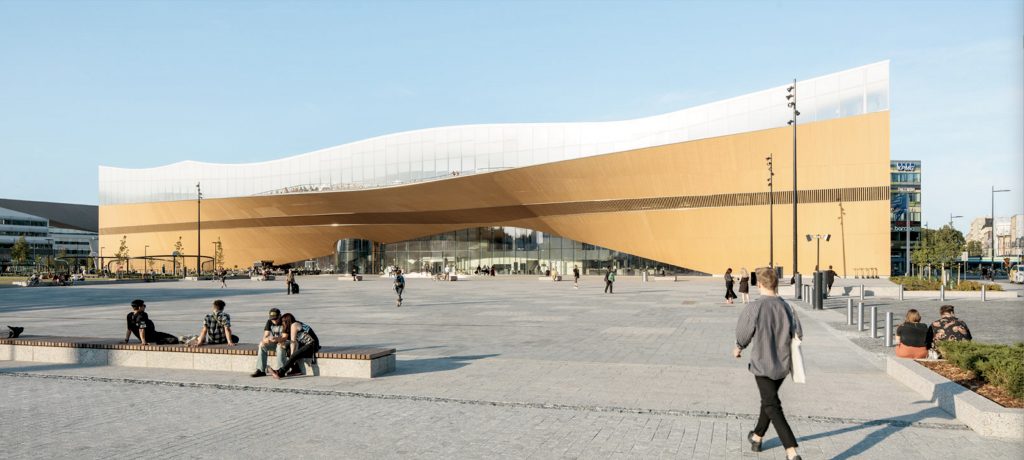
Helsinki Central Library, by ALA Architects (2012-2018)
The world has experienced a limited number of open competitions over the past three decades, but even with diminishing numbers, some stand out among projects in their categories that can’t be ignored for the high quality and degree of creativity they revealed. Included among those are several invited competitions that were extraordinary in their efforts to explore new avenues of institutional and museum design. Some might ask why the Vietnam Memorial is not mentioned here. Only included in our list are competitions that were covered by us, beginning in 1990 with COMPETITIONS magazine to the present day. As for what category a project under construction (Science Island), might belong to or fundraising still in progress (San Jose’s Urban Confluence or the Cold War Memorial competition, Wisconsin), we would classify the former as “built” and wait and see what happens with the latter—keeping our fingers crossed for a positive outcome. Read More… 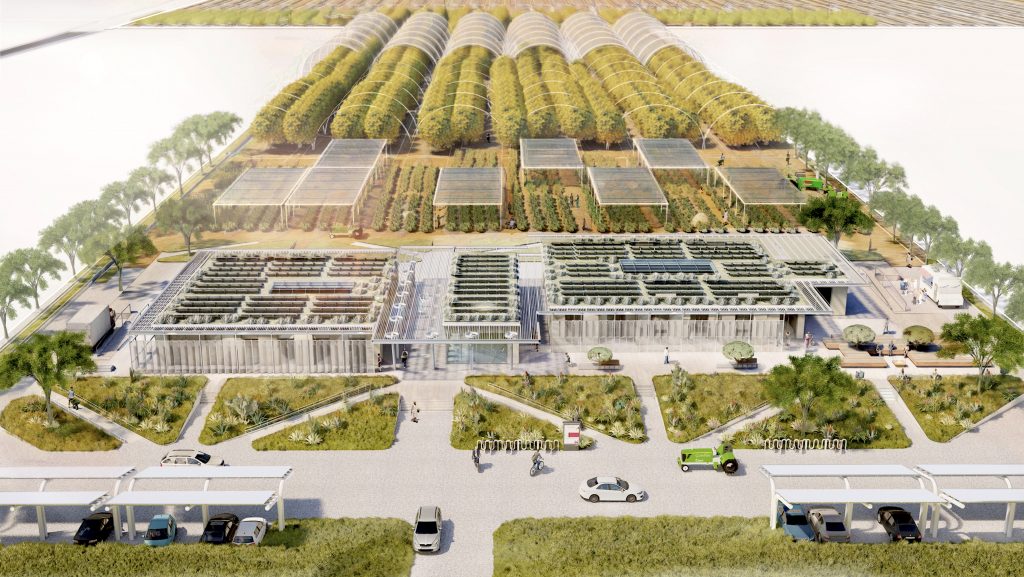
2023 Teaching and Innovation Farm Lab Graduate Student Honor Award by USC (aerial view)
Architecture at Zero competitions, which focus on the theme, Design Competition for Decarbonization, Equity and Resilience in California, have been supported by numerous California utilities such as Southern California Edison, PG&E, SoCAl Gas, etc., who have recognized the need for better climate solutions in that state as well as globally. Until recently, most of these competitions were based on an ideas only format, with few expectations that any of the winning designs would actually be realized. The anticipated realization of the 2022 and 2023 competitions suggests that some clients are taking these ideas seriously enough to go ahead with realization. Read more… 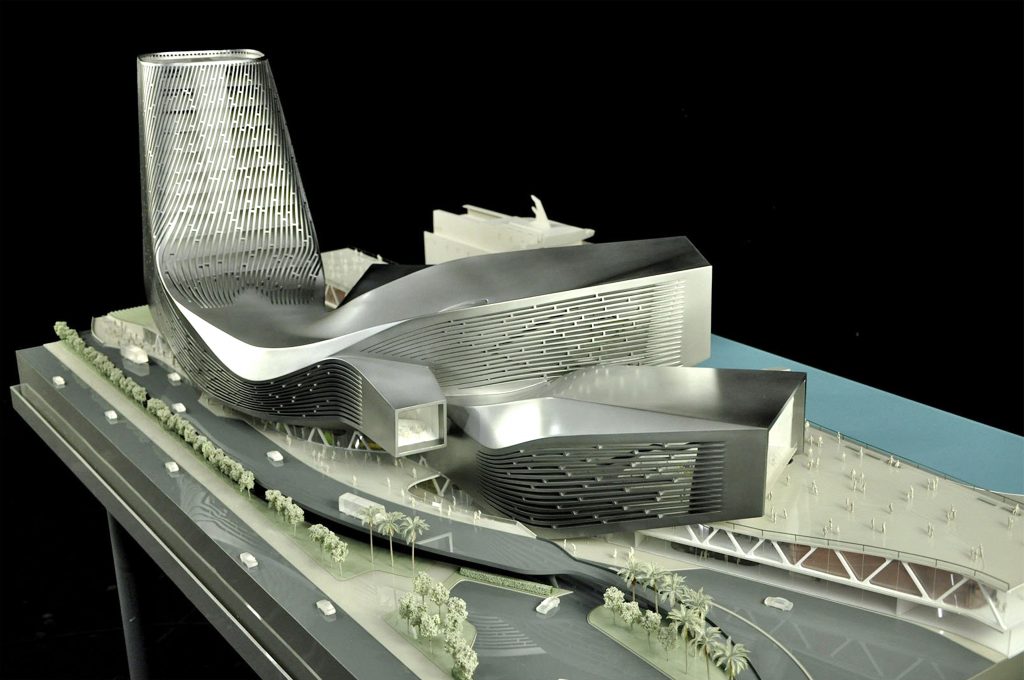
RUR model perspective – ©RUR
New Kaohsiung Port and Cruise Terminal, Taiwan (2011-2020)
Reiser+Umemoto RUR Architecture PC/ Jesse Reiser – U.S.A.
with
Fei & Cheng Associates/Philip T.C. Fei – R.O.C. (Tendener)
This was probably the last international open competition result that was built in Taiwan. A later competition for the Keelung Harbor Service Building Competition, won by Neil Denari of the U.S., the result of a shortlisting procedure, was not built. The fact that the project by RUR was eventually completed—the result of the RUR/Fei & Cheng’s winning entry there—certainly goes back to the collaborative role of those to firms in winning the 2008 Taipei Pop Music Center competition, a collaboration that should not be underestimated in setting the stage for this competition Read more… 
Winning entry ©Herzog de Meuron
In visiting any museum, one might wonder what important works of art are out of view in storage, possibly not considered high profile enough to see the light of day? In Korea, an answer to this question is in the making. It can come as no surprise that museums are running out of storage space. This is not just the case with long established “western” museums, but elsewhere throughout the world as well. In Seoul, South Korea, such an issue has been addressed by planning for a new kind of storage facility, the Seouipul Open Storage Museum. The new institution will house artworks and artifacts of three major museums in Seoul: the Seoul Museum of Modern Art, the Seoul Museum of History, and the Seoul Museum of Craft Art.
Read more… |



























